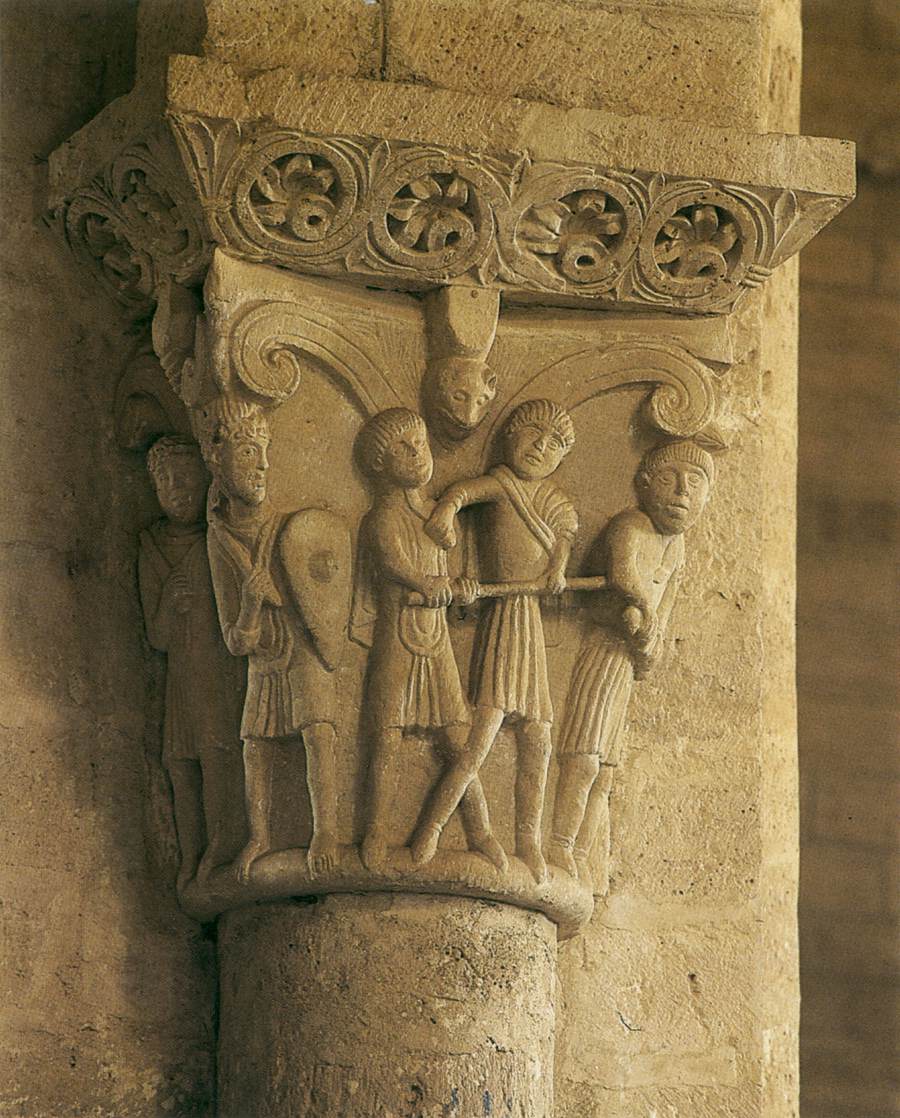
Register a SNAP EBT card with Amazon
Capital with Spanish Infantry in Combat
The Church of San Martín de Tours de Frómista in Frómista, province of Palencia, Castile and León, Spain.



MEDIEVAL SCULPTOR, Spanish, (active 1066-1090)
Capital
1066-90
Stone
San Martín, Frómista
The picture shows a capital on one of the half-columns between the nave and the side aisle.
Source: Web Gallery of Art
Muniadona of Castile (c.995 – 1066), also called Mayor or Munia, was Queen of Pamplona (1011 – 1035) by her marriage with King Sancho Garcés III. After the death of her husband in 1035, Muniadona founded the monastery of San Martín de Tours de Frómista, and in her testament dated 13 June 1066, she requested to be buried there. She probably died shortly after executing her last will. Of the monastery buildings only the church survives.
Source: Muniadona of Castile
(Cat. 90) Frómista was the retreat of Doña Mayor, widow of Sancho III, el Mayor, of Navarre, who in her will, executed in 1066, granted to three monks a monastery that “had begun to be built” there, with an additional bequest of several parcels of property. Although the document makes mention of an already existent church, it would be difficult to attribute an edifice as complex as San Martín to such an early date and to such an exiguous monastic community. Doña Mayor bade her descendants (upon whom she conferred the patronage for this endeavor) to see to its continued prosperity and growth, and, to judge by the quality of the present building, her heirs must have carried out her wishes. In 1118 Queen Urraca gave the monastery to San Zoilo of Carrión de los Condes, a Cluny priory located, like Frómista, on the pilgrimage road.
The sculptural style of San Martín’s sanctuary is reflected in the lid to the sarcophagus of Alfonso Ansúrez (cat. 107), who died in 1093, which suggests that work had been in progress at the monastery since about 1090; stylistic and documentary evidence from before 1094 points to the presence of the principal master of Frómista at Jaca Cathedral. That Frómista predated Jaca is confirmed by the obvious influence on capital (a) exerted by the Hadrianic Oresteia sarcophagus that was then in the church of Santa María de Husillos, some fifteen miles south of Frómista, and is now in the Museo Arqueológico Nacional, Madrid. As numerous quotations or reminiscences of this piece are also found on the decoration of Jaca Cathedral, it may be concluded that the sculptor worked at San Martín before going on to Aragon.
Source: The Art of medieval Spain, A.D. 500-1200. Mteropolitan Museum of Art, New York.